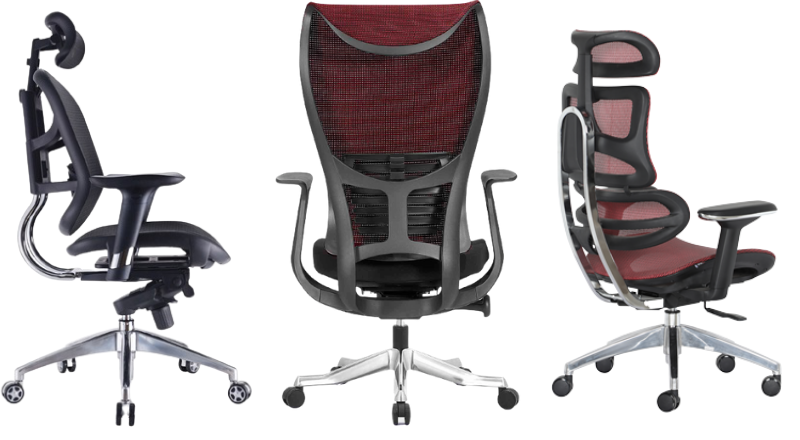In today’s fast-paced and technology-driven work environment, spending long hours in front of a computer has become the norm for many professionals. The importance of a comfortable and supportive workspace cannot be overstated, and one key element in achieving this is the use of ergonomic office chairs. These chairs are designed to provide optimal support and comfort, promoting a healthier and more productive work experience. In this blog post, we’ll delve into the world of ergonomic office chairs, exploring their benefits, key features, and tips for choosing the right one for your needs.
Understanding Ergonomics:
Ergonomics is the science of designing products and environments to fit the needs and capabilities of the human body. In the context of office chairs, ergonomic design focuses on creating a chair that supports the natural curve of the spine, promotes good posture, and minimizes the risk of musculoskeletal disorders.
Benefits of Ergonomic Office Chairs:
- Improved Posture: Ergonomic chairs are designed to support the spine’s natural curvature, helping to maintain a proper posture. This reduces the strain on the neck, shoulders, and lower back.
- Enhanced Comfort: The comfort provided by ergonomic chairs is unparalleled. They often feature adjustable components such as lumbar support, armrests, and seat height, allowing users to customize the chair to their specific needs.
- Increased Productivity: Comfortable employees are generally more focused and productive. Ergonomic chairs contribute to a healthier and more pleasant work environment, leading to better concentration and task performance.
- Reduced Risk of Health Issues: Prolonged sitting in non-ergonomic chairs can contribute to various health problems, including back pain, neck strain, and even circulation issues. Ergonomic chairs are designed to mitigate these risks by providing proper support.
Key Features of Ergonomic Office Chairs:
- Adjustable Seat Height: A crucial feature that allows users to set the chair at a height that aligns with their desk, ensuring proper ergonomics.
- Lumbar Support: Ergonomic chairs often include built-in lumbar support to maintain the natural curve of the lower spine and prevent backaches.
- Armrest Adjustability: Adjustable armrests support the arms and shoulders, reducing strain and allowing for a more relaxed posture.
- Swivel and Casters: The ability to swivel and move easily on casters promotes flexibility and accessibility around the workspace.
- Breathable Materials: Many ergonomic chairs are constructed with breathable materials to enhance comfort during long periods of use.
Choosing the Right Ergonomic Chair:
- Consider Your Body Type: Different chairs cater to various body types. Consider your height, weight, and body shape when selecting an ergonomic chair.
- Test Before Purchasing: Whenever possible, test the chair before buying it. Check for comfort, adjustability, and overall support.
- Review Adjustable Features: Ensure the chair has adjustable features such as seat height, lumbar support, and armrests to accommodate your specific needs.
- Read Reviews: Explore online reviews and testimonials to gather insights into the experiences of other users with the chair you’re considering.
Conclusion:
Investing in an ergonomic office chair is an investment in your health, comfort, and productivity. By prioritizing proper ergonomics, you can create a workspace that not only supports your physical well-being but also enhances your overall work experience. Take the time to choose the right ergonomic chair that aligns with your body’s needs, and you’ll be on your way to a more comfortable and productive workday.
